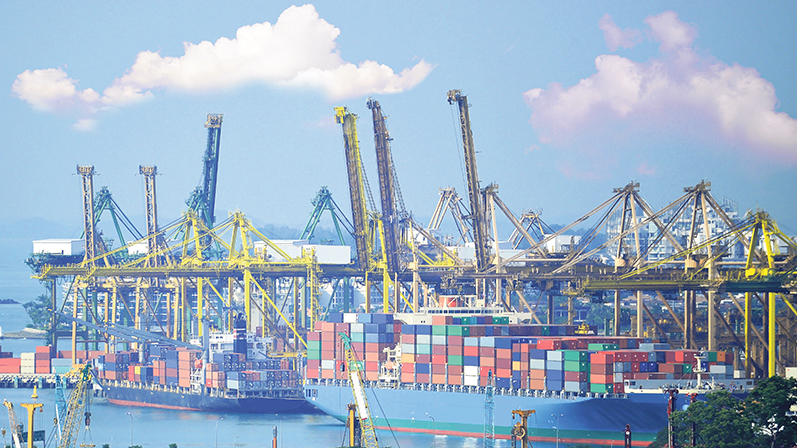Strategic approach crucial to success in Asia
Canada’s bilateral trade with Asia in 2015 was worth $168.8-billion with more than half the total being attributed to trade with China. ISTOCKPHOTO.COM
The growing significance of the Asia Pacific region shows the need for Canada to develop a strategy to diversify and deepen its existing partnerships in the region, according to the Asia Pacific Foundation of Canada (APF).
In a report published earlier this year, the APF proposed a series of recommendations for a Canada-Asia strategy in response to the rise of Asia as a global economic power and political force.
“The Government of Canada has the opportunity to strengthen its position as a credible and reliable collaborator and partner in Asia. An engagement that respects Canadians’ core beliefs – yet is open to the traditions, interests and values of the region – will help advance Canadian national interests and contribute to the sustainable development and growth of the region,” according to the report titled Building Blocks for a Canada-Asia Strategy.
“Even though China’s economy is slowing, it’s important to note that it is still growing at 6.5 per cent annually. ”
Dominated by China, Canada’s second biggest trading partner after the U.S., by 2030, Asia will account for 53 per cent of the world’s population, 50 per cent of the world’s GDP, 64 per cent of the global middle class and more than 40 per cent of global middle class consumption, APF president and CEO, Stewart Beck stated earlier this year.
Even though China’s economy is slowing, it’s important to note that it is still growing at 6.5 per cent annually, says Sarah Kutulakos, executive director of the Canada China Business Council.
“Every year that base gets bigger, so the amount of economic incremental value that China is providing to the world is still pretty incredible. It’s 25 per cent of the world’s growth,” she adds.
That’s important for Canada because our trade with China comprises 50 per cent of our trade with Asia as a whole, she says.
While the volume and value of trade with other Asian nations may not be as large as with China, it is still significant. For example, Export Development Canada (EDC) announced earlier this year that it provided financing estimated at US$1-billion in 2015 to facilitate business between Canadian and Indian companies, an annual record.
“2015 was EDC’s most successful year to date in India, and there’s a lot more room to grow,” said Nathan Andrew Nelson, EDC’s chief representative in India.
EDC’s permanent representatives in Mumbai and New Delhi made more than 100 introductions between Indian buyers and Canadian companies in 2015, and co-led three significant trade missions in the oil and gas, information and communications technologies, and infrastructure sectors.
India is now Canada’s fourth largest trading partner in Asia behind China, Japan and South Korea and ahead of Taiwan and Vietnam.
Japan is also in Canada’s sights. At the conclusion of his recent visit to Tokyo, Prime Minister Justin Trudeau said improving trade relations with Japan is a top priority of his government.
“The growing collaboration between Canada and Japan – on innovation and science – will contribute directly to our economic growth, and will benefit all Canadians,” he added.
But for most Asia watchers, China is where many of the best opportunities for Canada lie. Ms. Kutulakos says while Canada’s trade with China is good, it’s not good enough.
“It grew by 10 per cent last year and by 6 per cent the year before that. But in general, we tend to be falling behind some of our competitor countries and we could be doing more,” she adds.
While Canadian companies need to be aggressive and driving their own business in China, the bilateral government relationship also has a very strong impact on business at all levels.
“When relations are good, companies find that it’s just that much easier to do business,” says Ms. Kutulakos.
Although the slowdown in the Chinese economy has affected commodity sales, Canadian exports to China increased by 5 per cent in 2015 compared to 2014, she adds. Nevertheless, Canadian companies still face challenges in doing business in China, including their size.
“Many of our companies are SMEs, and it’s harder to do business if you’re a $10-million company rather than a $1-billion company. We also find that a lot of Canadian companies don’t have a strategy for China while their competitors from other countries do,” she says.
Ms. Kutulakos says there are good opportunities for Canadian companies in specific sectors in China including agri-food, and food and beverage in general.
While China remains crucially important to Canada, the APF’s Stewart Beck, in his message in the foundation’s Asia report, urged the government to adopt a wider strategic view of Asia.
“This is a pivotal time for Canada and for Canadians – a time to decide how to navigate through the ebb and flow of Asia’s rise. A concerted and strategic approach to Asia is necessary to ensure appropriate engagement over the long term,” he wrote.


